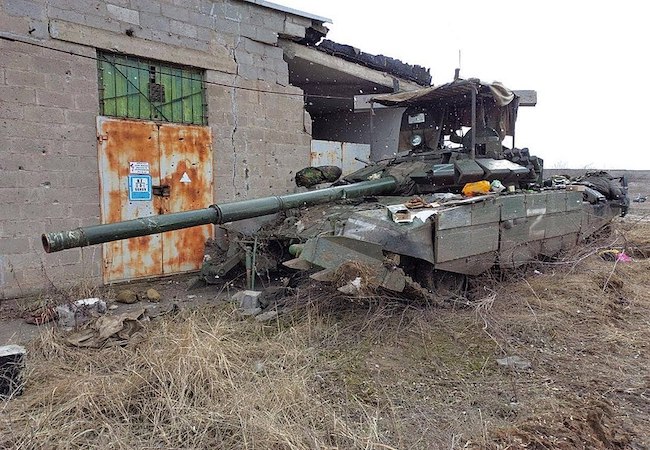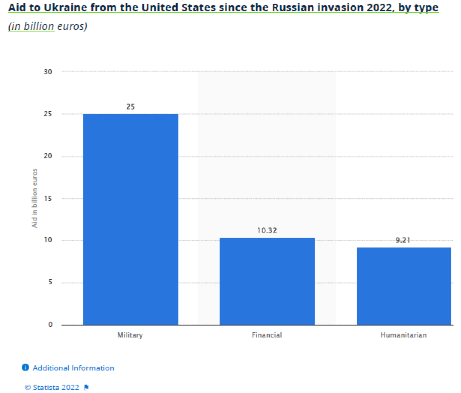The United States is fighting wars on two fronts
The United States is confronting two diverse super powers simultaneously. The problem is whether the United States will come out from the confrontation as the winner.

The world is currently in a series of confrontations possibly last seen during World War II. The United States is dealing with two wars on two different levels. On one level the United States is dealing with Russia, through Vladimir Putin, is his bloody attempt to take over Ukraine. Putin is dragging Russia into a long, expensive, and destructive series of battles in order to make Ukraine a part of its sphere of influence. Putin is determined to make Ukraine part of Russia even if some people in his own country are totally against it. Putin is also determined to make Ukraine part of Russia even if it will be damaged both financially and economically. Putin also failed to realize the answer from the United States and its allies in NATO. He probably thought the United States would close both eyes to such a series of attacks. He failed to take into consideration that the war in Ukraine would turn into a confrontation between Russian military might versus military aid from the United States. His failed calculations could end up costing Russia in many ways. This confrontation between the United States and Russia could be categorized as a hot war.
The United States is also in a cold war with China. The United States and China are confronting each other based on trade and economics. China is attempting to make its economy number one in the world no matter what it takes. Whether it means lending money to other less developed nations or making massive investments in technological innovations, China will do what it can in order to obtain world economic dominance. But this means knocking off the United States from its long-held top spot as the globe’s economic leader. As President, Donald Trump started a trade war with China in order to keep the United States in its top global economic position. President Joe Biden must also do what he can to keep the United States in its economic leadership position, but this means continuing the confrontation with China. This economic confrontation has evolved into a cold war and it could affect both the United States and China in various ways.
The cold war with China
The United States and China have not been in a cold war for long. It could be said that the confrontation between the two economic superpowers started in the last half of the last decade as China’s economy was starting to grow as more goods were exported into the American market. The growth of trade between the two nations went from approximately $100 billion in 2001 to $500 billion in 2017. Chinese factories churned out low-cost products to the United States and the rest of the world while it also made an important position for itself in the global supply chains.
Some American critics and policymakers were seriously alarmed by the ever-growing tag of “Made in China” on many products sold in retail stores. These critics and policymakers saw China’s quantum leap in its economic growth as a serious challenge to the economic and geopolitical leadership and dominance once held by the United States. They feared that China’s growth was too fast and too soon. Donald Trump based his 2016 presidential campaign on reducing America’s trade deficit with China. He based his campaign on China’s unfair trade practices, including theft of intellectual property, and encumbered access by American companies into the Chinese market.
This argument worked well enough to help get Trump elected President of the United States in 2016 and based on a report he ordered from the Office of the United States Trade Representative to investigate China’s trade and economic practices, he imposed tariffs on Chinese imports. Even though the United States under Trump imposed tariffs on Chinese made goods coming into the American market, China would not take this lying down. Under President Xi Jinping, China retaliated with import tariffs and restrictions on imported American goods and products. Hit especially hard were American farmers who regarded China as their biggest customer for such items as soy beans and pork, to name a few. China turned to other foreign producers for items it would normally get from American producers, such as farmers.
The problem is that the trade war between the United States and China ended up costing both countries in terms of revenues and economic growth. For example, the tariffs the United States either increased or imposed on thousands of Chinese made products between the years 2018 and 2019 was approximately $350 billion. China’s tariffs on American exported goods affected approximately $100 billion of items from farmers and manufacturers.
The trade war had devastating results for both nations. For the United States, the trade war affected its economy in different ways. Moody’s Analytics published a study in 2019 that showed that the trade war cost the United States almost 300,000 jobs while reducing real GDP by an estimated 0.3 percent. Other studies have shown that the economy of the United States was hit other ways. In 2019, Bloomberg Economics reported that the trade war would possibly cost the American economy $316 billion by the end of 2020. In a study conducted jointly by the Federal Reserve Bank of New York and Columbia University, the conclusion was reached that American companies’ share price went down $1,700 billion following the increases in tariffs.
China and the United States are still waging their cold war based on economics and trade. It will end up costing both countries in the long run. The worrisome part is where this cold war could lead. Will it cause a severe recession for China or an economic slowdown for the United States? In order to draw attention away from the economic cold war, will China start an invasion of Taiwan which could lead to a shooting war with the United States and perhaps some other nations in Asia? Unfortunately, at this point here are more questions than answers.
The hot war with Russia
Russia’s invasion of Ukraine has been a bloody and costly for both nations. For Ukraine it has meant the loss of thousands of its people, the destruction of its cities and infrastructure, and the use of all its resources to counter the Russian invasion. For Russia, Putin has miscalculated the reaction of the Ukrainian people, the reliability of the Russian military, and the reaction of the United States and its NATO allies.
But most importantly, Putin has miscalculated that the United States would play a significant role in aiding Ukraine. The amount of aid from military, financial, and humanitarian perspectives are important for the Ukrainians. This aid has allowed the Ukrainians to have a fighting chance against the Russians but at the same time give the United States an opportunity to see how its military technology matches up against Russia’s. And so far, not only are the Ukrainians holding their own, but the Russian military is proving to be a big disaster.
The amount of aid the United States has sent to Ukraine is huge. For example, in March 2022 President Biden announced $800 million in military assistance to Ukraine. This came in the form of military equipment directly sent to the Ukrainian military from the United States Defense Department. Among the items included in the $800 million assistance plan were:
- 800 Stinger anti-aircraft systems
- 100 Tactical unmanned aerial systems
- Over 20 million rounds of small arms ammunition and grenade launcher and mortar rounds
- 25,000 sets of body armor
- 25,000 helmets
2,000 Javelin, 1,000 light-armor weapons, and 6,000 AT-4 anti-armor systems.
But this could be considered only the beginning. In May 2022, the United States Congress approved $40 billion in aid to the Ukrainians. But when combined with previous aid from the United States, this came to approximately $54 billionfrom the start of 2022 to May. Among the aid given to Ukraine, this included:
- Traditional foreign aid totaling $31.4 billion
- Military aid totaling $20.6 billion
- Other aid amounting to $1.7 billion
This immediate aid is important for Ukraine’s survival. But it is also a sign that the United States is expecting a long confrontation in Ukraine and that military and other aid is vital to the besieged nation’s survival. There is no clear indication when or if the Russians will leave Ukraine. But the United States, through its military assistance is making a long-term commitment. Some estimates state that the level of aid from the United States to Ukraine will come to $135 million per day.
While this seems like a great deal of money, it represents the level of aid, military and otherwise, that the United States is willing to commit in order to confront Putin’s actions in the beleaguered Ukraine. The problem is further complicated by the fact that unless the United States draws a line in the sand with the invasion of Ukraine, the Russians will feel that they will have no obstacles to going to the borders of Poland, Estonia, Romania, Latvia, Hungary, and Lithuania. The United States is acutely aware of what Putin is trying to accomplish even if it means loss of creditability and respect for Russia on the world stage. Russia will continue to put resources, both human and military, into Ukraine no matter what the price it will pay. Under President Biden, the United States realizes that it must draw that proverbial line in the sand in Ukraine or else it may be too late in six months. Even if this means that the United States must fight an indirect hot war with Russia right now.
What is next?
The United States finds itself in a bind. On the one hand, it must deal with China in a confrontation over economic and trade superiority. China’s economy is not in the best shape and their policymakers are concerned about an extended slowdown or possible collapse. While China should be more worried about its economic situation, President Xi Jinping has his focus on bringing Taiwan under the Chinese umbrella. The big question on every policymaker’s is whether this could lead to a war in the South China Sea. And if this does occur, can the United States afford the resources of sending aid to Ukraine while also fighting a war with China over Taiwan?
On the other hand, how long can the United States afford to send aid, both military and humanitarian, to Ukraine? This may depend on whether President Biden is re-elected in 2024 and what the new administration will do regarding Ukraine? Will a new president consider Ukraine too expensive a liability and shut his/her eyes to Putin’s agenda? Right now there are more questions than answers as to what the future will hold.





